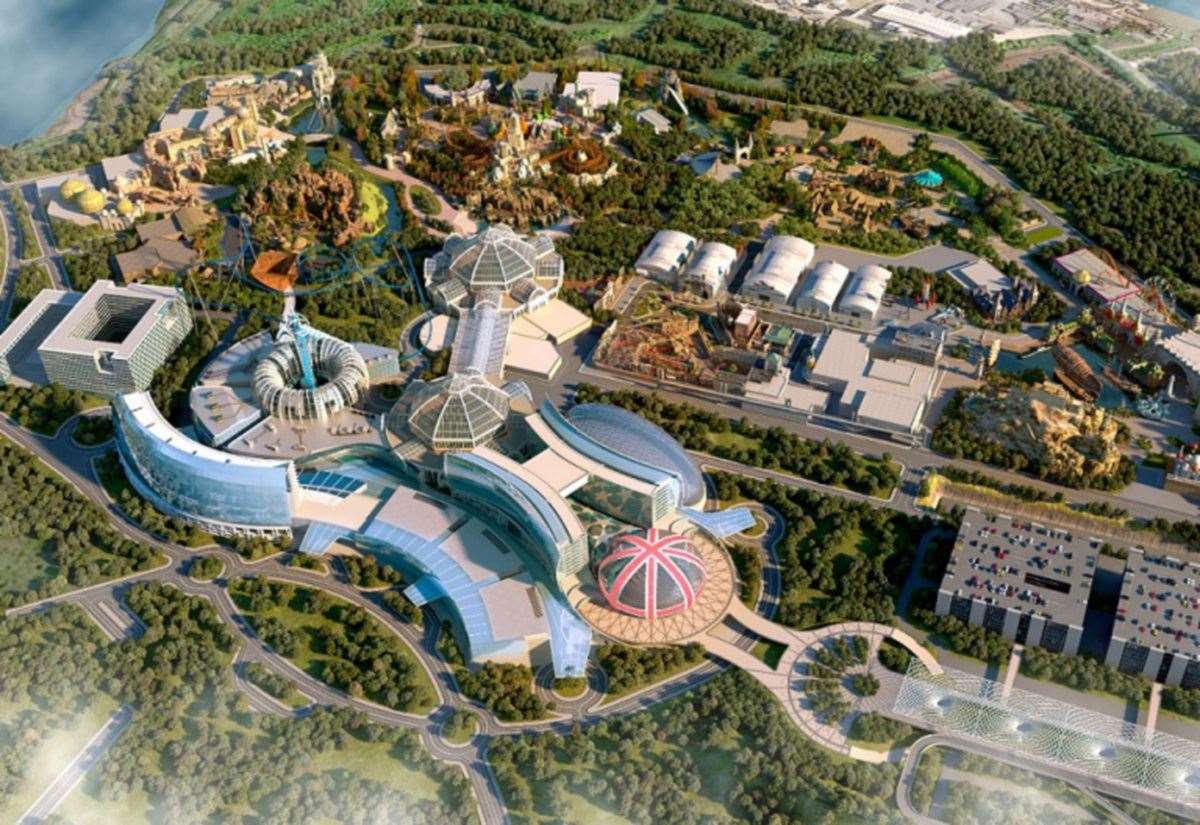Swanscombe Development LLP which is itself up for sale. LRCH is to all intents and purposes asset-less.Who owns the land? I guess that is/was the most important thing.
- News all the latest
- Theme Park explore the park
- Resort tour the resort
- Future looking forward
- History looking back
- Community and meetups
-
ℹ️ Heads up...
This is a popular topic that is fast moving Guest - before posting, please ensure that you check out the first post in the topic for a quick reminder of guidelines, and importantly a summary of the known facts and information so far. Thanks. - Thread starter Spark
- Start date
- Favourite Ride
- VelociCoaster (Islands of Adventure)
- Favourite Ride
- Voltron Nevera
- Favourite Ride
- Black Hole
You are using an out of date browser. It may not display this or other websites correctly.
You should upgrade or use an alternative browser.
You should upgrade or use an alternative browser.
London Entertainment Resort: All Discussion
If will be interesting to see if the environmental nutters have the same level of anger when a big developer wants to stick a load of fancy apartments thereSwanscombe Development LLP which is itself up for sale. LRCH is to all intents and purposes asset-less.
Matt N
TS Member
I’m not sure it’s necessarily fair to call them “environmental nutters”. There clearly is biodiversity that Natural England saw fit to protect on the site, hence its designation as an SSSI.If will be interesting to see if the environmental nutters have the same level of anger when a big developer wants to stick a load of fancy apartments there
An interesting comparison is Universal’s proposal in Bedford, a proposal by an established theme park company in a less contentious location. That has been known about for a year and has no known environmental concerns; heck, it has even had environmentally-minded bodies express approval of the proposal.
There were huge site suitability questions even ignoring the SSSI designation.If will be interesting to see if the environmental nutters have the same level of anger when a big developer wants to stick a load of fancy apartments there
If you ask me (and of course nobody has) the true purpose of the project was never to deliver a resort theme park. Whether it delivered in those true aims, I don't know, but a theme park appearing on the Swanscombe Peninsula was never a possible outcome.
The quote from the Times article did make me laugh though:I’m not sure it’s necessarily fair to call them “environmental nutters”. There clearly is biodiversity that Natural England saw fit to protect on the site, hence its designation as an SSSI.
An interesting comparison is Universal’s proposal in Bedford, a proposal by an established theme park company in a less contentious location. That has been known about for a year and has no known environmental concerns; heck, it has even had environmentally-minded bodies express approval of the proposal.
So an industrial use in the past makes it unsuitable for any further development?Natural England said the industrial use had left a landscape providing “ideal conditions for a unique variety of wildlife,” including plants such as the divided sedge and the slender hare’s-ear.
KolonelKlink
TS Member
Nearly 13 years after this thread started, the time has come to put this unmitigated disaster out of its misery, folks.
London Resort Holdings is in liquidation - by order of the High Court - and the London Resort is now officially, 100% dead:

 www.kentonline.co.uk
www.kentonline.co.uk
London Resort Holdings is in liquidation - by order of the High Court - and the London Resort is now officially, 100% dead:

Confirmed: £2.5bn theme park dream is finally over
After years of uncertainty, KentOnline can exclusively confirm the £2.5bn London Resort theme park dream is now officially over.
AT86
TS Member
Merlin even managed to get themselves on the creditors list somehow. 
LRCH has also been told to pay costs to Merlin Entertainments, a rival theme park operator and the company behind the likes of Chessington World of Adventures and Thorpe Park. It had opposed the plans.
Skyscraper
TS Member
Sooooo, this thread can be locked now, I guess?

QTXAdsy
TS Member
So it seems Merlin will be able to pay off those debts thanks to this then? Huh, wonder if that money might help get the Galactica retheme resurrected again?Merlin even managed to get themselves on the creditors list somehow.
Themeparksandy1981
TS Member
I bet the spiders are jumping for joy with the news.
No chance any creditors see a penny!So it seems Merlin will be able to pay off those debts thanks to this then? Huh, wonder if that money might help get the Galactica retheme resurrected again?
Benzin
TS Member
At least they have the legacy of taking us on the greatest ride of all.
The real theme park were the friends we made along the way.
KolonelKlink
TS Member
More satisfied customers:

 www.kentonline.co.uk
www.kentonline.co.uk

Theme park fallout: ‘Everyone was so excited - then they left us shafted and paralysed’
Businesses who fought “tooth and nail” for their survival in the shadow of a now-scrapped multi-billion pound theme park project have spoken out.
KolonelKlink
TS Member
Kent Online’s now got hold of some of the unreleased concept art - looks like the plan was for a Ghostbusters dark ride and a Paddington area with funfair-style rides and a meet-and-greet:

 www.kentonline.co.uk
www.kentonline.co.uk

Exclusive: Unseen images of planned London Resort attractions
After the death of the £2.5bn London Resort project, exclusive images of planned attractions at the site are revealed as conservationists celebrate.
Bert2theSpark
TS Member
Lmao, so London Resort might have saved us from a Ghostbusters retheme of Duel?Kent Online’s now got hold of some of the unreleased concept art - looks like the plan was for a Ghostbusters dark ride and a Paddington area with funfair-style rides and a meet-and-greet:

Exclusive: Unseen images of planned London Resort attractions
After the death of the £2.5bn London Resort project, exclusive images of planned attractions at the site are revealed as conservationists celebrate.www.kentonline.co.uk
Paddington is rumoured for Universal GB, but Peaky Blinders would have been a really cool area to have!!

